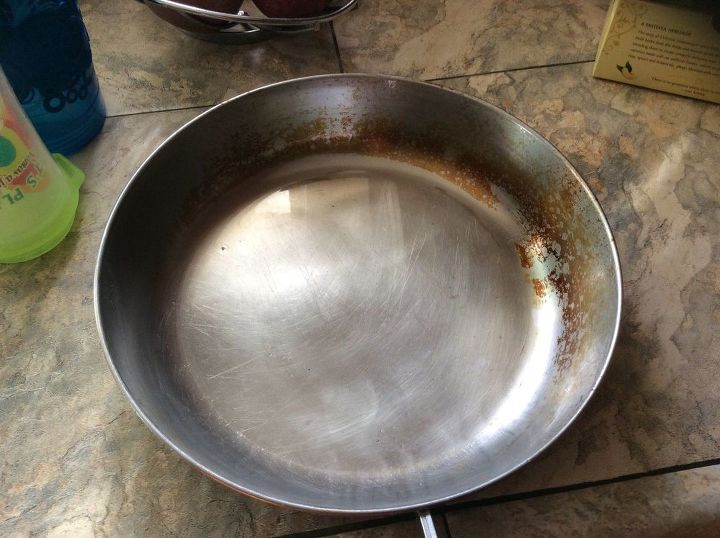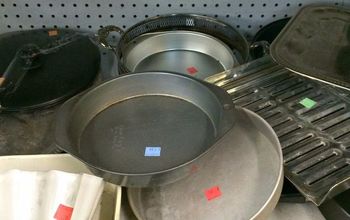How can I clean pet odors from indoor concrete floors?

For those of you who have interior concrete floors I have a question. How do you remove pet smells from pets? I clean with bleach, vinegar, dawn dish soap, pine-sol and everything I could think of. Do you guys have any solutions or tried and true family secrets, lol!? Leslie
Related Discussions
How to clean a mirror without streaks?
Every time I clean my mirrors, they end up having tons of streaks and almost look worse than before I started. What could I use to clean them that won't leave streaks... See more
How to clean burns on stainless steel pans?
Help! I burned my pan. How do I clean stainless steel cookware that's been burned?
How to clean shower doors
How to clean glass shower doors
How to clean hardwood floors in the kitchen?
What is the best way to clean hardwood floors in the kitchen?
How to clean my kitchen cabinets from grease?
My kitchen cabinets are embarrassingly greasy. Please share your degreasing tips with me so I don't have to cringe every time I glance at my cabinets.


Do you have a dehumidifier running in the areas where you have interior concrete? I think your cleaning products are good but concrete can hold moisture and when it is humid in the summer it will smell musty. The dehumidifier will help to dry out the area and keep it drier. Concrete will also hold urine smells if your pets have used the area to eliminate. You may have to try an enzyme cleaner. Here is some information that might help you. https://www.wikihow.com/Remove-Urine-Odor-from-Concrete
This will work.
http://www.naturesmiracle.com/
You need to use products that kill the urine smell. Lots of different products out there sold in pet stores.
THIS IS FOR DOGS & CATS BOTH.......it is absolutely essential to use a cleaner that can break down the uric acid. When urine dries, the urea is broken down by the bacteria. This is what makes it smell like ammonia. As it decomposes further, it releases thiols that make the odor worse. (It is the thiols in skunk spray that make it SO potent and difficult to remove).
The urea and urobilin/urobilinogin are not hard to clean. Urea, urobilin/urobilinogin, creatinine and the pheromones are water soluble (urobilin is the pigment that causes the color). Traditional household or carpet cleaners will deal with these, and this is why hydrogen peroxide, vinegar, and/or baking soda also appear (initially) to be effective at eliminating the problem. But the problem has not been solved! Uric acid and its salts have been left behind. Uric acid is not water soluble and bonds tightly to whatever surface it touches.Soap, vinegar, baking soda, ammonia, chlorine, and hydrogen peroxide (to name the most common cleaners) simply are not chemically capable of breaking down the uric acid in cat pee. These cleaners and deodorizers only temporarily make the smell go away and appear to work because they do clean up the other components of the urine. But when exposed to humidity, the uric acid salts cause the uric acid crystals to reform. This process releases the smell again; not always at levels detectable to the human nose, but the cats’ more sensitive noses can smell it. And the scent of their urine outside of the litter box encourages many cats to continue urinating outside of the box, often with their families left scratching their heads wondering why,or dogs lifting their legs on furniture corners.
The only thing that will break down the uric acid to permanently remove the smell is an enzyme cleaner. The enzymes break down uric acid into carbon dioxide and ammonia, both gasses that then easily evaporate. This is why it is also essential to allow the enzyme cleaner to air dry. It needs the “natural” drying time to break down the uric acid salts, allowing the resulting gases to evaporate.
Not all enzyme cleaners are equally effective. Good enzyme cleaners are typically a bit more expensive. Cheap ones(natures miracle) will work, but need to be reapplied over and over (and probably end up costing as much as the more expensive enzyme cleaners). Enzyme cleaners this author is aware of that work well and reliably include Nok Out, Urine Off, and Anti-Icky Poo.
Of course any cleaner needs to be used properly. Most enzyme cleaners come in a spray bottle. This is deceptive, because just spraying a light layer of enzyme cleaner over a urine stain will not result in complete cleaning of that spot. Cat/dog pee wicks(spreads seeping outward), and unless the enzyme cleaner completely envelopes all of the cat/dog pee, even it won’t work. “Spraying” doesn’t work. Dousing, pouring, and soaking are required when cleaning up cat urine.
To properly use an enzyme cleaner on a fresh stain:
1. Blot up as much of the urine as you can before applying anything.
2. Soak the affected area with the enzyme cleaner.
3. Let the enzyme cleaner sit for 10 to 15 minutes.
4. Blot up as much of the enzyme cleaner as possible.
5. Leave the enzyme cleaner to air dry.
Covering the area loosely with something is always a good idea. This will not only help prevent the cat from attempting to pee on the same spot while the enzyme cleaner does its work; it will stop family members from stepping or sitting on the wet spot. Some people lay aluminum foil down over the area; other recommendations include an upside down laundry basket or an aluminum baking sheet.
The same basic procedures apply for an old stain. But be aware that an old stain may require two or three full cycles of enzyme cleaner application (allowing it to completely dry between applications) in order to completely clean the stain.